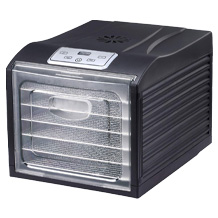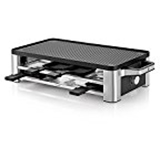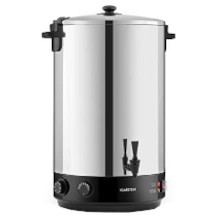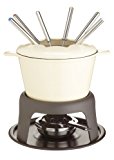Waffle maker purchasing advice: how to choose the right product
- What you need to know
- A waffle maker offers optimal conditions for the quick, uncomplicated preparation of perfectly shaped waffles.
- Depending on the model, you can prepare one, two, or even more portions at the same time.
- In addition to safety features, the most useful functions include a temperature regulator, indicator lights, and a non-stick coating.
Make delicious waffles yourself
Who doesn’t enjoy a fresh warm waffle every now and then? While debates can be had regarding the perfect ingredient ratio of the batter or the tastiest toppings, one thing is indispensable when making waffles: a waffle maker, also known as waffle iron.
As early as the 15th or 16th century, the dish was known in large parts of Europe. But in some regions, such as southern Germany and Austria, only the richest enjoyed the tasty treat. Nowadays, waffles are available to everyone. Thanks to the widespread use of electric waffle irons, anyone can prepare them in their own kitchen. Modern appliances can reach temperatures of well over 356 °F (180 °C).
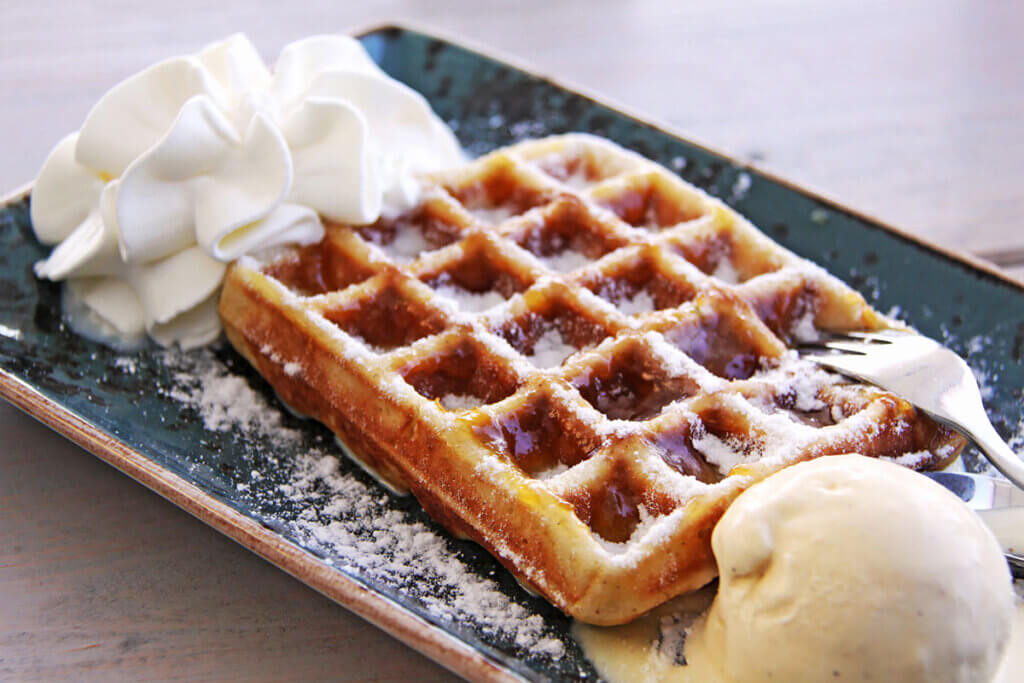
Delicious pastries for every occasion
Waffles have become an indispensable part of European cuisine. Not only do they taste delicious, they also offer a wide range and topping variations (sweet or savoury). The easy-to-make pastry is equally suitable for family nights with your children, as it is for those who like to experiment and try out new things.
Moreover, waffles have a strong cultural component. For example, in many households, they are inextricably linked to Christmas. Others like to eat them on their birthdays. Of course, making waffles doesn’t require a special occasion. Whatever the reason or occasion for making waffles, sooner or later the waffle maker has to be put to work.
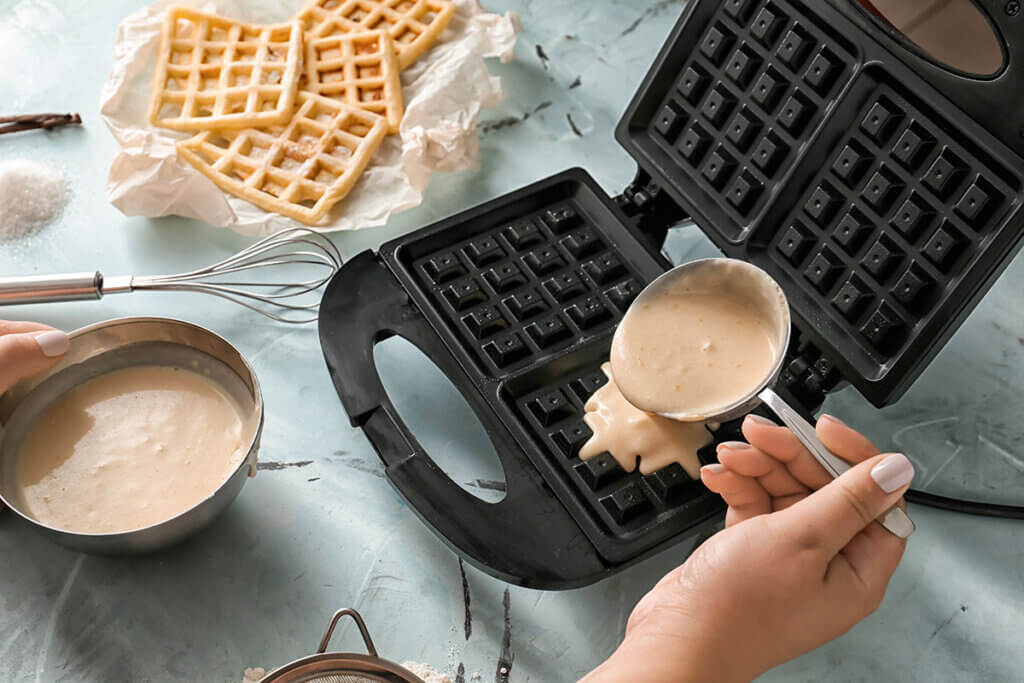
The different types
The main distinction is made between models for rectangular Belgian waffles and heart-shaped waffles. In addition, there are double and quadruple models for those with a particularly large appetite or a lot of guests. Multifunctional appliances with interchangeable plates that function as a waffle iron, sandwich maker, and doughnut maker at the same time are also available.
Differences in preparation
When it comes to the batter, there are no particular differences between the various waffle types. Belgian waffles often contain yeast instead of baking powder, but, nowadays, many new recipes can be found without the leavening agent. The steps for preparing waffles are also the same between the two types. However, spreading the batter is a little more difficult in square waffle irons.
In round, heart-shaped models, it is enough to put a spoonful of waffle batter directly into the centre of the iron. It will spread evenly when the lid is squeezed shut. In square models, it is important to spread the batter a little with an appropriate utensil before closing the lid to get a neat result.
Differences in the shape
The form of a waffle is either heart-shaped, which does not pertain to the shape of the entire waffle but the individual pieces, or rectangular (also known as Belgian waffles). Of course, to make a waffle of your preferred shape, you need to purchase a waffle maker of that same shape.
Another difference is their thickness. Belgian waffles are significantly thicker or taller than heart-shaped ones. The room between the deeper dough spaces can therefore be filled with more delicious toppings such as chocolate sauce or ice cream, which can then melt into the waffle. The flatter heart-shaped waffle, on the other hand, cannot hold as many toppings as the Belgian version.
Differences in serving and eating
Heart-shaped waffles can be torn into perfectly uniform pieces, due to their prefabricated tearing points. A Belgian waffle, on the other hand, requires a knife to cut it into your desired portion size. Hosts therefore often serve it pre-cut, including a generous topping of whipped cream, ice cream, syrup, or hot cherries.
Heart-shaped waffles are always served whole, as this is more visually appealing and easy to eat thanks to the pre-cut pieces. Due to their being thinner, these waffles can hold less topping mass and are therefore often eaten with more moderate amounts of toppings like the classic chocolate sauce and powdered sugar combo. This way they can also easily be eaten by hand, as they are often served in places like Christmas markets. Instead, Belgian waffles are often served in restaurants or cafés, where they are served on plates with extravagant toppings and are eaten with cutlery.
Comparing single and double waffle irons
The market offers waffle irons that can be used to bake one, two, or even more waffles in one go. Which model is better depends on your needs. If you want to serve lots of waffles quickly, a single waffle maker will not serve you well. Double waffle irons can bake two waffles at the same time. Hence, they are particularly suitable for those looking to make many waffles in one go. For commercial purposes, you can even use quadruple irons to further increase your output.
Similar product types and multifunction devices with changeable plates
One appliance, many dishes — this is made possible by multifunctional appliances with changeable irons. The combination of waffle iron and sandwich maker is widely used as a 2-in-1 appliance. There are also 3-in-1 appliances that have an additional plate for doughnuts or cake pops. So, if you can use all the available plates, a combination appliance saves a lot of space and ensures a somewhat smaller carbon footprint. Consumers who only want to bake waffles should opt for the single purpose appliance.
What matters when buying
Modern waffle irons come in a variety of functions, features, and specifications. But which ones are useful and which ones can be ignored? Common features and functions of these appliances are:
- Size and shape
- Material
- Power and temperature control
- Control lamps
- Non-stick coating
- Overflow protection
- Safety
Size and shape
The standard diameter for a heart-shaped waffle is 7 inches. Other sizes can also be found, including other types of waffle irons. Larger models are often somewhat more energy-efficient. Most appliances have the classic honeycomb pattern, others print motifs or words on the baked product instead. You can also go for a more unconventional shape if you want. Some models also allow you to make waffles on a stick, by placing a wooden stick in the appropriately shaped baking mould.
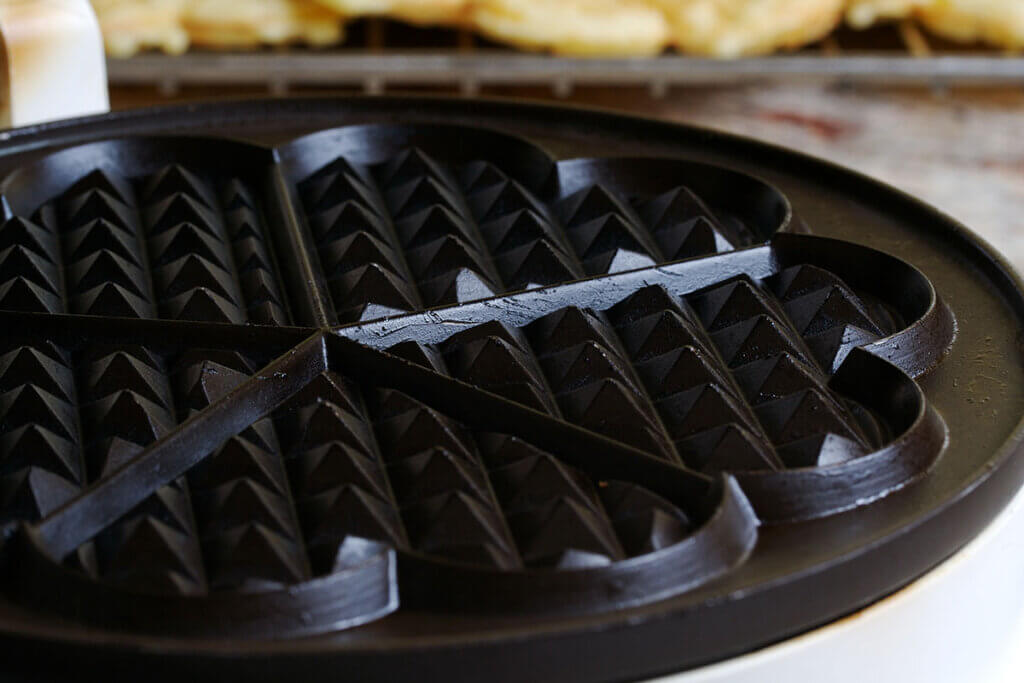
The material
Modern waffle irons are made of cast iron or a coated metal on the baking surface, and of a temperature-resistant plastic, stainless steel, or aluminum on the outside. A plastic housing has several advantages: It has insulating properties and thus protects you against burning your hands on hot metal. These models are more suitable for children and more clumsy or careless users. In addition, plastic can be dyed in many colours, so you can choose the one that best fits your kitchen.
Appliances without plastic housings might be a bit more environmentally friendly in their production and disposal, but they carry a certain risk of burns, as the outside can heat up, especially with repeated and prolonged use. For this reason, the handles are typically coated with an insulating material such as rubber.
Power and temperature control
As with many other appliances, power output plays a big role in the outcome. A higher wattage makes for crispier and darker waffles. Too much power, however, is not advisable, as it could burn the baked goods. For waffle irons, a wattage of between 600 and 900W is sufficient.
Some like their waffles crispy and dark, others prefer them light and soft. With a temperature control knob, you can adjust the baking level as desired. Depending on the model, it can be adjusted steplessly or in several stages. Perfectionists will get their money’s worth with more precise setting options.
The control lamps
Indicator lights can significantly improve the baking result. A single light indicates when the baking temperature has been reached. From this moment on, you can start making your waffles in the right temperature.
Some models have a second light. It is used to indicate that the waffle is ready. Since a single waffle can take a few minutes, such a light allows you to do other things in the meantime. All you have to do is glance over to the direction of the waffle maker and see if the waffle is ready or not. Even better are models with acoustic signals. That way you will hear the signal even if you miss the light.
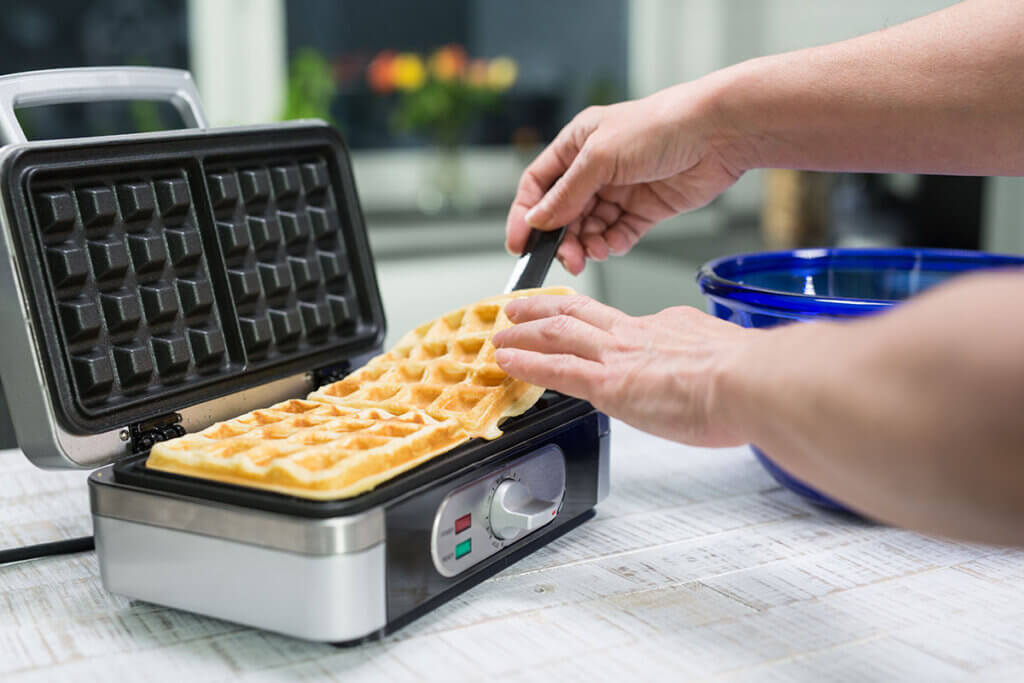
Non-stick coating and overflow protection
Waffle irons often have a high-quality non-stick coating made of PTFE or ceramic. This reduces the amount of fat required and thus lowers the calorie content of the delicious treats. In many appliances, baking is even possible without greasing, but it depends on the batter and its composition. Another advantage of not having to use fat is that, when cleaning, it is sufficient to wipe out the interior with a soft cloth. Since electrical appliances are not allowed in the dishwasher, this will make your life easier. Non-stick coatings such as Teflon require careful handling, otherwise annoying scratches can quickly appear and damage the coating.
If you add too much batter into the waffle maker, you will make a mess. Waffle baking requires you to add just the right amount of batter, so it does not overflow. If you are inexperienced or don’t trust yourself to get this right, you should opt for a model with overflow protection. In this case, the waffle iron keeps the excess batter in check and also produces thicker waffles.
Safety
Since electric appliances always carry a certain risk of accidents, it is important to pay attention to safety features — and not only when there are children in the house. For example, non-slip rubber feet for a safe and stable placing and heat-insulated handles to prevent burns are indispensable. Furthermore, a heavy weight ensures stability. An overheating protection with automatic switch-off can also prevent fires in time and should therefore be considered.
Tips for use and care
There are many recommendations for waffle irons. But the following tips are particularly useful:
- Before using for the first time, you should heat the waffle iron thoroughly to remove any residues from the manufacturing process.
- Before each use, it is a good idea to check the appliance and cable. If there is a defect, repair is necessary.
- When using on heat-sensitive work surfaces, a base is necessary. The cable should be positioned so that no one can accidentally trip over it or pull on it.
- Adults should always guide and supervise children when baking.
- Hot steam often escapes when baking. So always keep a little distance from the heated appliance. It is a good idea to have oven mitts within easy reach.
- If the waffle sticks to the iron, greasing with fat will help. To grease the iron as sparingly as possible, just spread some fat with baking brush.
- Forks and knives have no business in the waffle maker, because they can create scratches and damage the coating. A wooden or plastic utensil is better suited for removing the waffles once cooked.
- After baking, the appliance must cool down completely before returning to the cupboard or drawer.
- A dry paper towel helps when cleaning, as it reliably absorbs grease. Stubborn encrustations are easier to remove with oiled kitchen paper (sunflower oil).
- Sharp cleaning agents and abrasive sponges are not suitable for cleaning a waffle iron.
Will it waffle?
Waffle irons can also be used to make other foods, such as sandwiches, scrambled eggs, and meat patties. This life hack is called waffling. However, some ingredients are considered unsuitable, such as melted chocolate or pure cheese (these can be hard to remove or clean).
Image 1: © kristina rütten / stock.adobe.com | Image 2: © Pixel-Shot / stock.adobe.com | Image 3: © Tim Friedrich / stock.adobe.com | Image 4: © gani_dteurope / stock.adobe.com

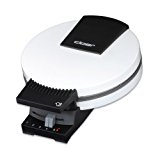
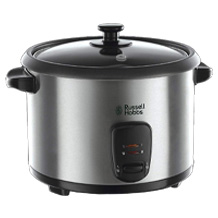
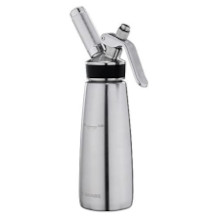
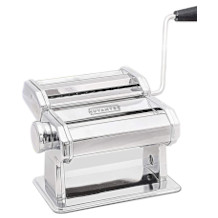
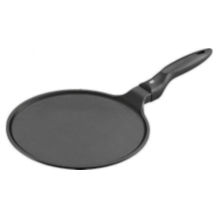
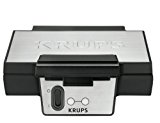
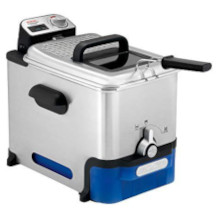

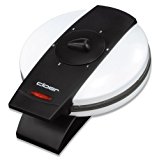

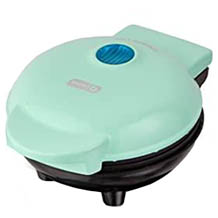
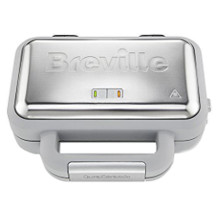
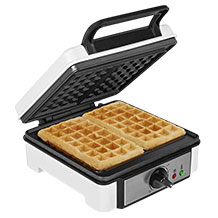
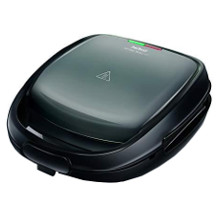
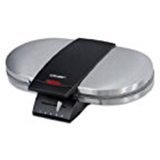
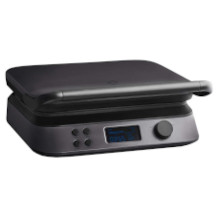
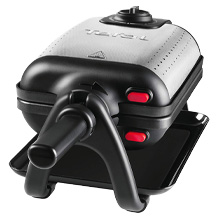
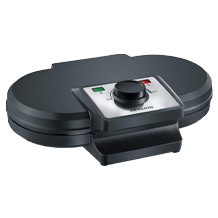
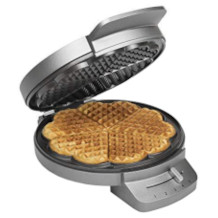
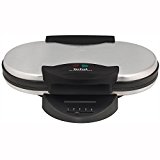
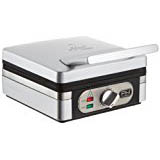
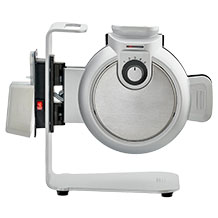
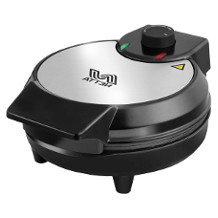
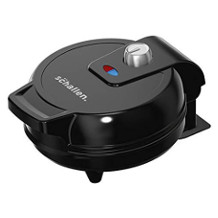

 1,070 reviews
1,070 reviews



